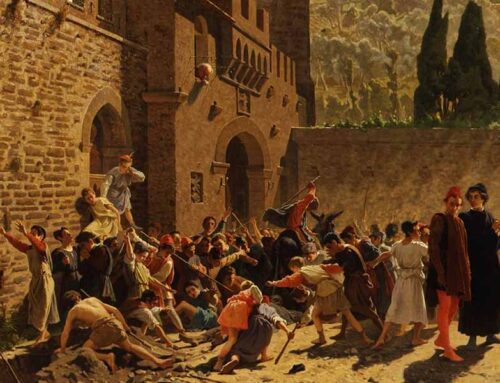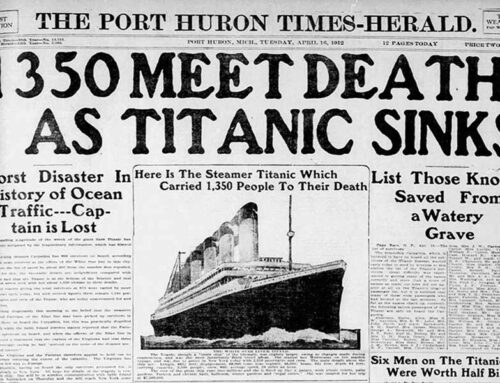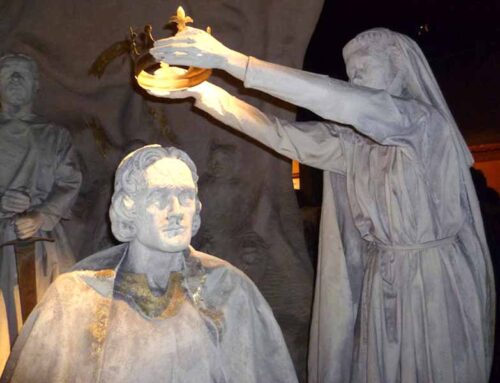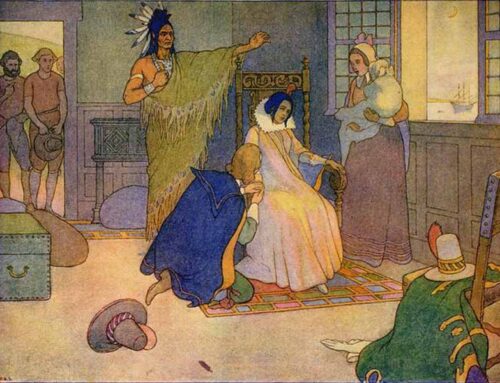
“Among the men who fought on Iwo Jima, uncommon valor was a common virtue”—Admiral Chester W. Nimitz
The Battle of Iwo Jima Begins,
February 19, 1945
![]() eventy-nine years ago, the battle for Iwo Jima began in the Pacific Theatre during World War II. It was fought during the last year of the war and the final push for victory extracted a brutal toll. A strong Japanese presence in its volcanic caves made every inch of ground gained a horrifying business as bayonets, flamethrowers and grenades in tight quarters proved the surest method of ferreting out the enemy. It earned Iwo Jima the nickname Hell Island.
eventy-nine years ago, the battle for Iwo Jima began in the Pacific Theatre during World War II. It was fought during the last year of the war and the final push for victory extracted a brutal toll. A strong Japanese presence in its volcanic caves made every inch of ground gained a horrifying business as bayonets, flamethrowers and grenades in tight quarters proved the surest method of ferreting out the enemy. It earned Iwo Jima the nickname Hell Island.
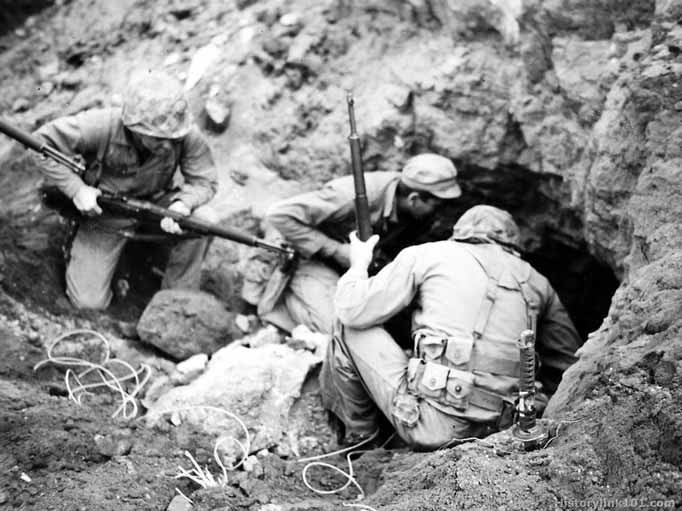
Marines in front of a Japanese cave dug into the rock, February 23, 1945
From February 19 to March 26, the US Marine Corps, Air Force and the US Navy fought to capture Iwo Jima and its strategic base in a string of islands leading to mainland Japan. During this brutal thirty-six days of fighting on the island, nearly 7,000 U.S. Marines gave their lives. Another 20,000 were wounded. Marines captured 216 Japanese soldiers; the rest were killed in action. That made for roughly one Marine or corpsman becoming a casualty for every three who landed on Iwo Jima. Eleven of the men who fought there would be given the Medal of Honor. It was the bloodiest battle in Marine Corps history up to that point and was the stepping stone towards victory in Japan. The island was finally declared secured on March 26, 1945 and afterwards provided an emergency landing field for crippled bombers returning from their bombing raids on Japan, and an advance base for the shorter-ranged escort fighters.
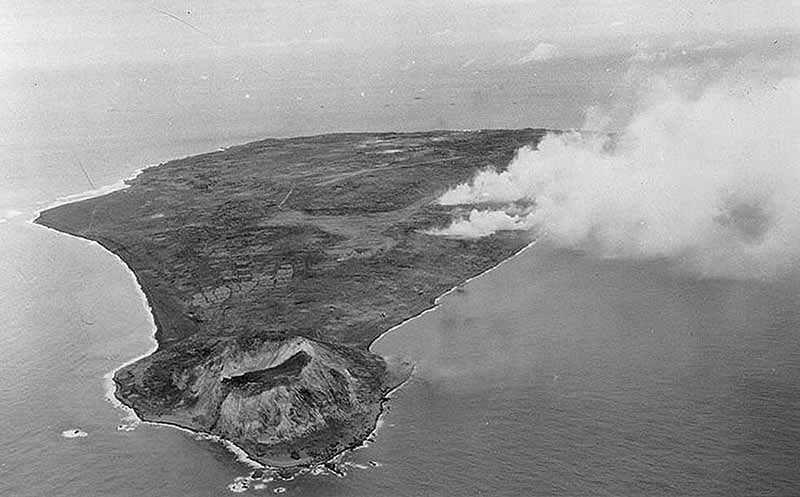
An aerial view of the island of Iwo Jima (with Mt. Suribachi in the foreground) shows the pre-landing bombardment beginning on the beach, February 17, 1945
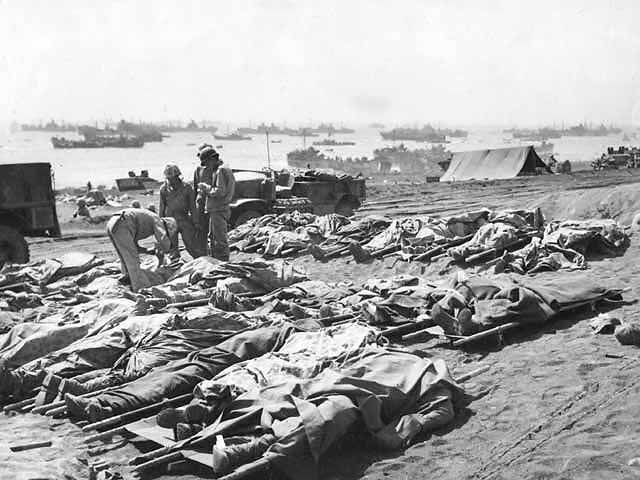
US Marine casualties are laid out on the beach while the battle still rages miles away
Three days into the conflict, prestigious War Correspondent Ernie Pyle reported this back home to the families of the men engaged:
“You may wonder why we have American troops at all here in the Marianas Islands, since we are 1500 miles away from the Philippines, China, or Japan itself. Well, it’s because in this Pacific war of vast water distances, we have to make gigantic bases of each group of islands we take, in order to build up supplies and preparations for future invasions farther on. The Marianas happen to be a sort of crossroads in the Western Pacific. Stuff can go either west or north from here. Whoever sits in the Marianas can have his finger on the whole web of the war. Thus the Marianas are becoming a heart of the Pacific war. Our naval and military leaders make no bones about it, for the Japs know it anyhow, but they’re too far away to do anything about it.”

Iwo Jima’s location in the Pacific in relation to Japan and other Pacific nations
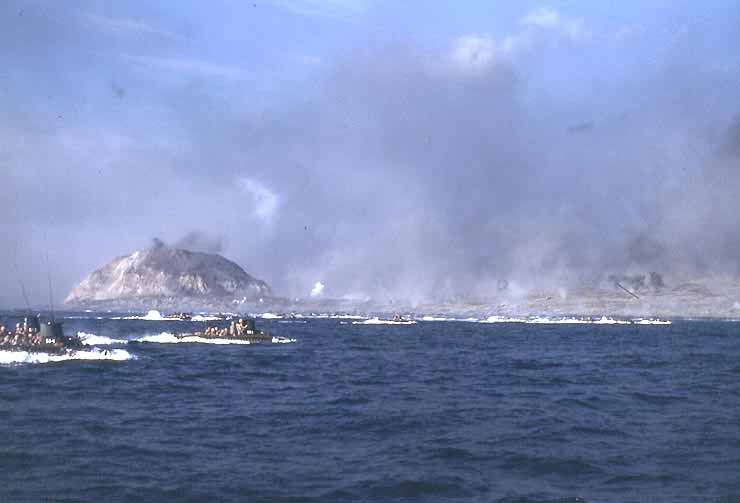
Amphibious tractors (LVT) head for landing beaches on Iwo Jima, February 19, 1945
“Too far away to do anything about” runs the risk of minimizing what a staunch defense the Japanese had prepared against the Marines. The account of 18-year-old E.J. Hayes’ struggle up the beach is a painfully common account of the tremendous cost required of each man that day:
“After the gate was lowered and we struggled out on the beach, I looked back at the coxswain; his face had turned white as he revved up the engine of the boat and backed off from shore. Later, I was to learn why. A fellow squad member . . . told me that the boat next to us took a direct hit from a mortar shell and that body parts were flying in all directions. I was glad I didn’t see that. As we paused on the beach waiting for word to move out, it seemed that my whole world changed on that alien island. It was like going to another planet. All thoughts of home or loved ones, it seemed, had to be pushed out of my consciousness. I could never bring them into such a hellish place in my imagination.”
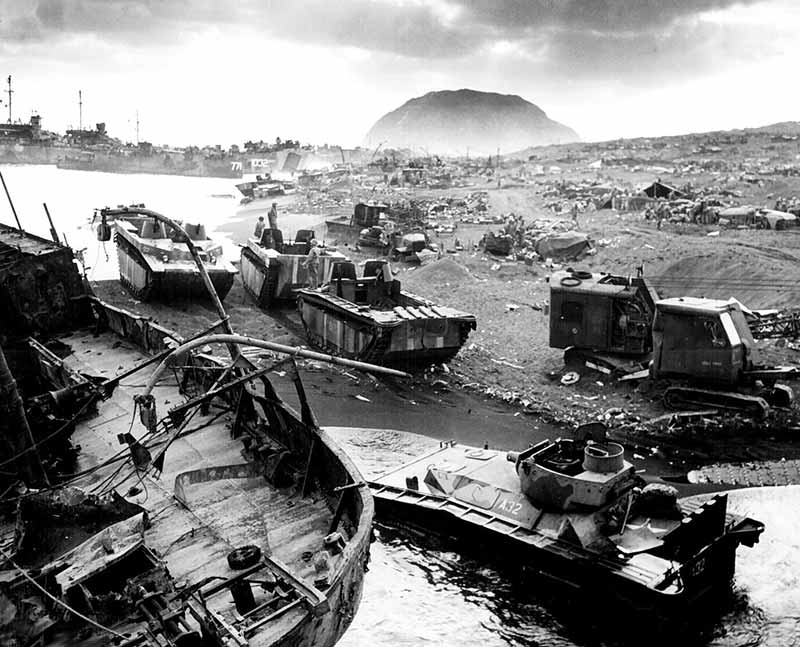
Smashed by Japanese mortar and shellfire, trapped by Iwo Jima’s treacherous black-ash sands, amtracs and other vehicles of war lay knocked out on the black sands of the volcanic fortress, February/March 1945
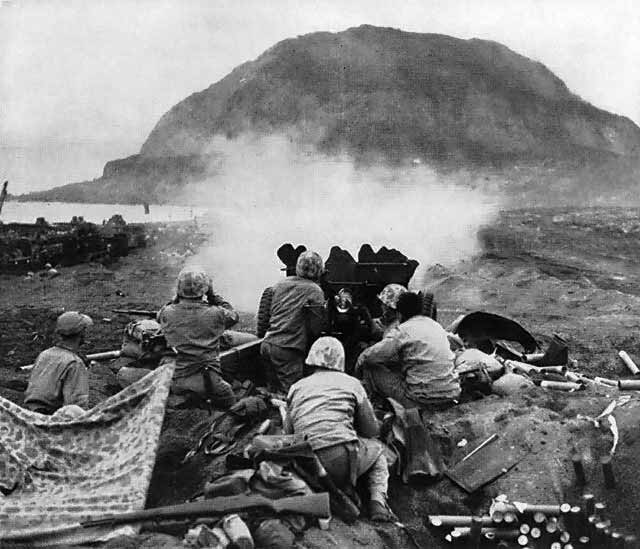
Gunfire is concentrated on the cave trenches in Mt. Suribachi
The now gloriously iconic photograph of six Marines raising the flag on top of Iwo Jima’s Mount Suribachi still swells the heart with gratitude and pride. It is well to remember it came after over a month of carnage with over six months still remaining in the fight with Japan. The youngest of those brave men who fought on Iwo are now well into their nineties. If you have opportunity to thank one, the time is now. The time to remember them is the rest of your lives.
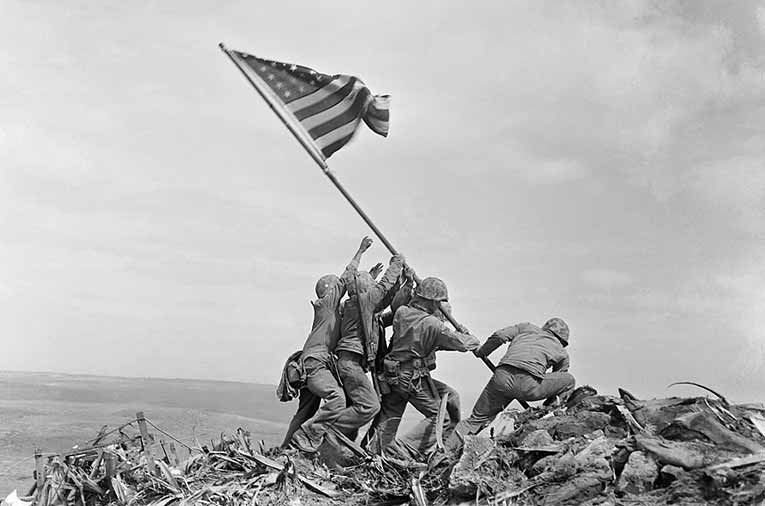
Raising the flag on Iwo Jima


